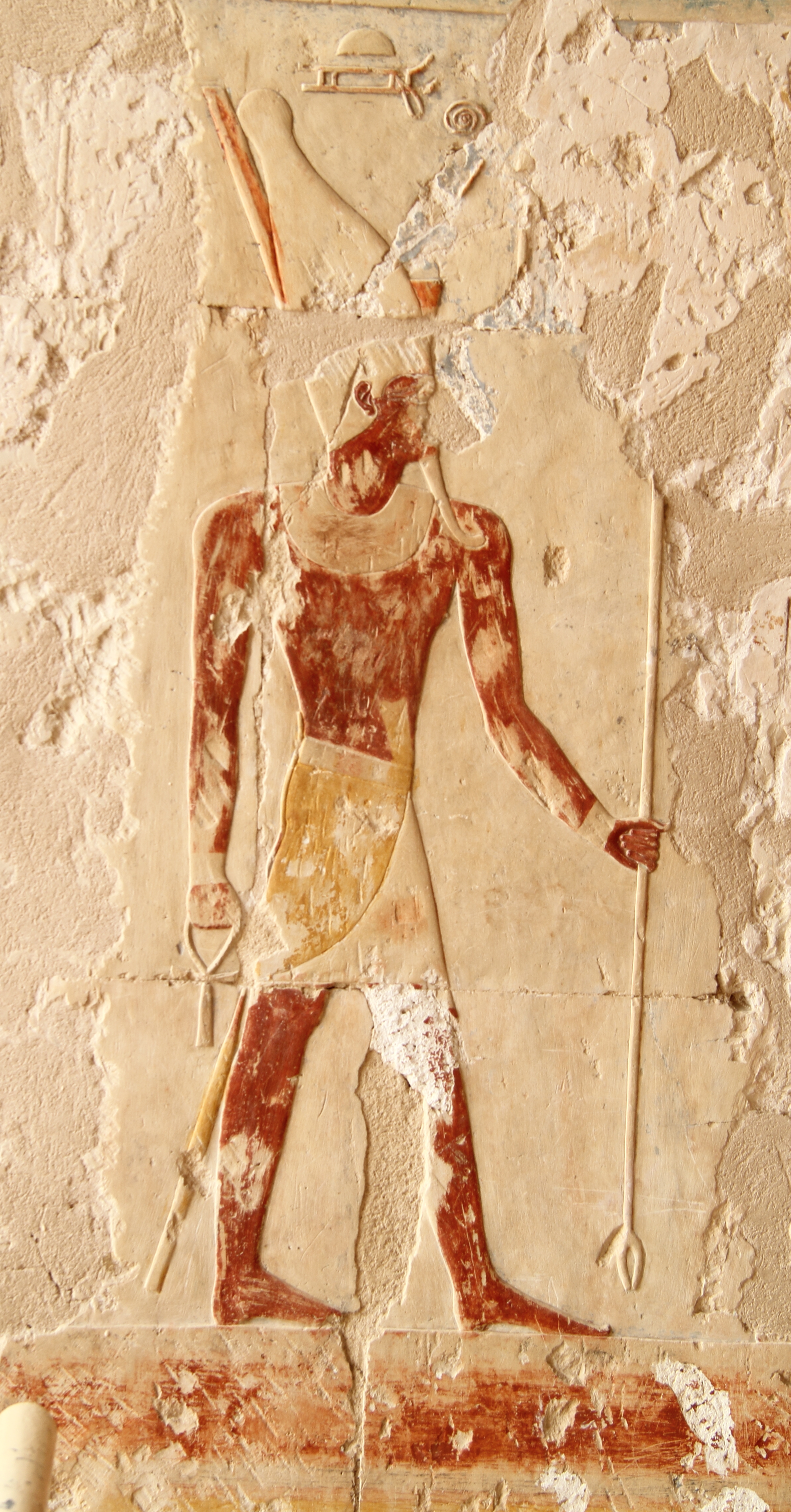|
Nebethetepet
Nebet-hetepet ''(nb.t-ḥtp.t)'' is an ancient Egyptian goddess. Her name means "Lady of the Offerings" or "Satisfied Lady". She was worshipped in Heliopolis as a female counterpart of Atum. She personified Atum's hand, the female principle of creation, and could also be a title for Hathor Hathor ( egy, ḥwt-ḥr, lit=House of Horus, grc, Ἁθώρ , cop, ϩⲁⲑⲱⲣ, Meroitic: ) was a major goddess in ancient Egyptian religion who played a wide variety of roles. As a sky deity, she was the mother or consort of the sky ..., but aside from that had little significance.Richard Wilkinson: ''The Complete Gods and Goddesses of Ancient Egypt''. London, Thames and Hudson, 2003. , p.156 References Egyptian goddesses Fertility goddesses Hathor {{Egyptian-myth-stub ... [...More Info...] [...Related Items...] OR: [Wikipedia] [Google] [Baidu] |
Hathor
Hathor ( egy, ḥwt-ḥr, lit=House of Horus, grc, Ἁθώρ , cop, ϩⲁⲑⲱⲣ, Meroitic: ) was a major goddess in ancient Egyptian religion who played a wide variety of roles. As a sky deity, she was the mother or consort of the sky god Horus and the sun god Ra, both of whom were connected with kingship, and thus she was the symbolic mother of their earthly representatives, the pharaohs. She was one of several goddesses who acted as the Eye of Ra, Ra's feminine counterpart, and in this form she had a vengeful aspect that protected him from his enemies. Her beneficent side represented music, dance, joy, love, sexuality, and maternal care, and she acted as the consort of several male deities and the mother of their sons. These two aspects of the goddess exemplified the Egyptian conception of femininity. Hathor crossed boundaries between worlds, helping deceased souls in the transition to the afterlife. Hathor was often depicted as a cow, symbolizing her matern ... [...More Info...] [...Related Items...] OR: [Wikipedia] [Google] [Baidu] |
Atum
Atum (, Egyptian: ''jtm(w)'' or ''tm(w)'', ''reconstructed'' ; Coptic ''Atoum''), sometimes rendered as Atem or Tem, is an important deity in Egyptian mythology. Name Atum's name is thought to be derived from the verb ''tm'' which means 'to complete' or 'to finish'. Thus, he has been interpreted as being the "complete one" and also the finisher of the world, which he returns to watery chaos at the end of the creative cycle. As creator, he was seen as the progenitor of the world, the deities and universe having received his vital force or ka. Origins Atum is one of the most important and frequently mentioned deities from earliest times, as evidenced by his prominence in the Pyramid Texts, where he is portrayed as both a creator and father to the king. Several writings contradict how Atum was brought into existence. Some state Atum was created by himself by saying his name, while others argue he came out from a blue lotus flower or an egg. Role In the Heliopolitan creation ... [...More Info...] [...Related Items...] OR: [Wikipedia] [Google] [Baidu] |
Egyptian Goddesses
Ancient Egyptian deities are the gods and goddesses worshipped in ancient Egypt. The beliefs and rituals surrounding these gods formed the core of ancient Egyptian religion, which emerged sometime in prehistory. Deities represented natural forces and phenomena, and the Egyptians supported and appeased them through offerings and rituals so that these forces would continue to function according to ''maat'', or divine order. After the founding of the Egyptian state around 3100 BC, the authority to perform these tasks was controlled by the pharaoh, who claimed to be the gods' representative and managed the temples where the rituals were carried out. The gods' complex characteristics were expressed in myths and in intricate relationships between deities: family ties, loose groups and hierarchies, and combinations of separate gods into one. Deities' diverse appearances in art—as animals, humans, objects, and combinations of different forms—also alluded, through symbolis ... [...More Info...] [...Related Items...] OR: [Wikipedia] [Google] [Baidu] |
Heliopolis (Ancient Egypt)
Heliopolis (I͗wnw, Iunu or 𓉺𓏌𓊖; egy, I͗wnw, 'the Pillars'; cop, ⲱⲛ; gr, Ἡλιούπολις, Hēlioúpοlis, City of the Sun) was a major city of ancient Egypt. It was the capital of the 13th Nome, 13th or Heliopolite Nome of Lower Egypt and a major religious centre. It is now located in Ayn Shams, a northeastern suburb of Cairo. Heliopolis was one of the oldest cities of ancient Egypt, occupied since the Predynastic Period of Egypt, Predynastic Period.. It greatly expanded under the Old Kingdom, Old and Middle Kingdom of Egypt, Middle Kingdoms but is today mostly destroyed, its temples and other buildings having been scavenged for the construction of medieval Cairo. Most information about the ancient city comes from surviving records. The major surviving remnant of Heliopolis is the Egyptian obelisk, obelisk of the Temple of Ra (god), Ra-Atum erected by Senusret I of Dynasty XII. It still stands in its original position, now within Al-Masalla in Al-Matariyya ... [...More Info...] [...Related Items...] OR: [Wikipedia] [Google] [Baidu] |
Fertility Goddesses
A fertility deity is a god or goddess associated with fertility, sex, pregnancy, childbirth, and crops. In some cases these deities are directly associated with these experiences; in others they are more abstract symbols. Fertility rites may accompany their worship. The following is a list of fertility deities. African * Ala, Igbo goddess of fertility *Asase Ya, Ashanti earth goddess of fertility * Deng, Dinka sky god of rain and fertility * Mbaba Mwana Waresa, Zulu goddess of fertility, rainbows, agriculture, rain, and bees *Oshun (known as ''Ochún'' or ''Oxúm'' in Latin America) also spelled Ọṣun, is an orisha, a spirit, a deity, or a goddess that reflects one of the manifestations of God in the Ifá and Yoruba religions. She is one of the most popular and venerated orishas. Oshun is the deity of the river and fresh water, luxury and pleasure, sexuality and fertility, and beauty and love. She is connected to destiny and divination. Ancient Egyptian *Amun, creator-god ... [...More Info...] [...Related Items...] OR: [Wikipedia] [Google] [Baidu] |





